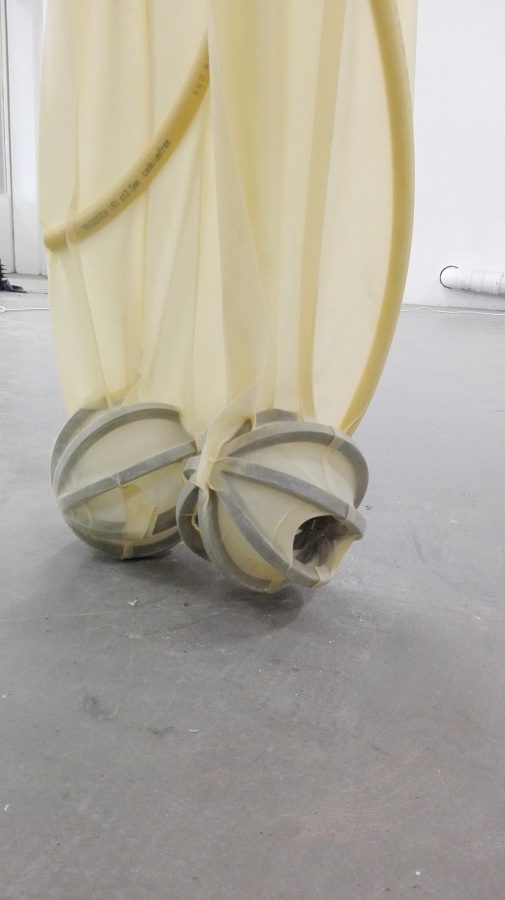3 Apr 2018
Interview
EVITA VASILJEVA: THESE HEAVY HUMAN EMOTIONS
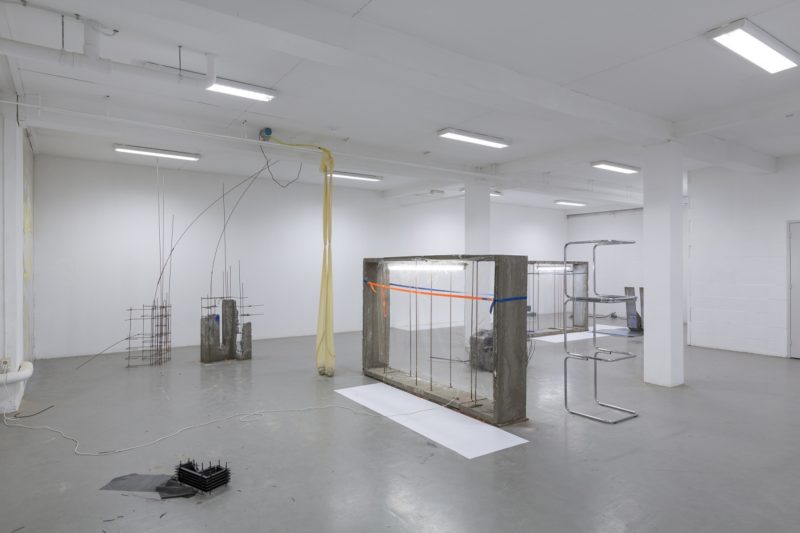
Evit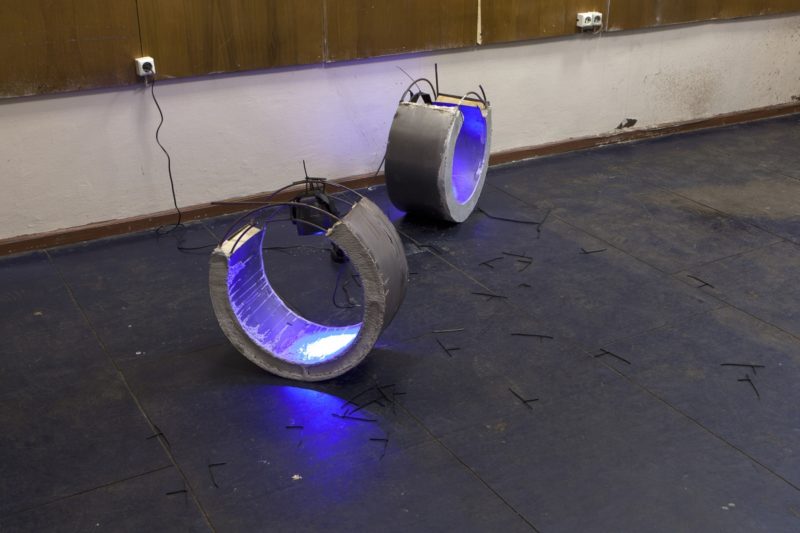 a Vasiljeva’s work mainly consists of big sculptures, made from heavy materials of varying textures and surfaces. Next to concrete sculptures, Evita also exhibits posters printed on paper, cardboard sculptures, and sculptures from latex. She sees her sculptures as comprising different glimpses and fragments. Her method of working with collecting, collage and research forms an abstract language that can give way to the production of human emotion, subconscious psychologies and an altering view on physical space. The materials she often chooses to use give gravity and names to intangible motions. Evita describes the materials she works with, such as rubber, metal, wood and concrete, as “earthy.” She believes these earthy materials form a base for where we are now, for everything that surrounds us, tying us to our environment.
a Vasiljeva’s work mainly consists of big sculptures, made from heavy materials of varying textures and surfaces. Next to concrete sculptures, Evita also exhibits posters printed on paper, cardboard sculptures, and sculptures from latex. She sees her sculptures as comprising different glimpses and fragments. Her method of working with collecting, collage and research forms an abstract language that can give way to the production of human emotion, subconscious psychologies and an altering view on physical space. The materials she often chooses to use give gravity and names to intangible motions. Evita describes the materials she works with, such as rubber, metal, wood and concrete, as “earthy.” She believes these earthy materials form a base for where we are now, for everything that surrounds us, tying us to our environment.
In Evita’s exhibitions, all works are presented on the floor, so that the sculptures are at a level with the viewers – exhibits and viewers, humans and not, everyone is equal. Often Evita works in the exhibition space. She starts with very little: ideas and sensations that she wants to visualise, and just starts building. Her sculptures are site-specific, in a way.
This idea or sensation, the starting point, can be something seemingly small. For example, her sculpture Manhours in Headquarters began taking shape from an interest in the word ‘headquarters.’ Similarly, the sculpture Hormones, came about when Evita put noise sensitive lights inside two sculptures, which react to the audience. Like hormones, Evita cannot control the sculptures as they change from viewer to viewer.

There is an intensity to Evita’s sculptures as a result of the often-employed combination of opposites. For instance, the sculptures seem simultaneously heavy and vulnerable. The sculptures’ mass and the gravity that grounds them, seems to come from errors and coincidences. Their weight and gravity, and, on the other hand, their breaks and their cracks are in cahoots with, not against each other.
Evita has much respect for colour, due to her background in painting. She used to paint a lot, but she realised somewhere along the way, that she enjoyed making the frame itself more than what should traditionally go in the frame. The language of her sculptures can be seen as modernist, with its references to gravity and architectural elements – however, Evita stresses that she uses architectural forms as drawing materials, not as a direct reference or a means to an end.
During her stay at Suomenlinna, Evita will continue to explore her interest in architectural forms and shapes, which are abundant on the island. She would like to get into a mode of working and research, where the end result is not of most importance.
AA: What are some of the initial ideas that you start building on, to create your sculptures?
EV: I collect with my eyes, sit in a ferry and look outside. Sometimes situations or forms I see on a daily basis strike out and make me curious. I can’t get them out of my mind. Then I want to understand them through work, to reconstruct the essentials of them without depicting them directly as they are. It is like a distillation of its matter though another form, gravity and sensation. For example, I got the inspiration for Hormones, when got a new studio outside of Amsterdam. I had to take a train every day, which broke my usual patterns of navigation. I started to pay attention to rails, train traffic lights, red, blue, white. Lights had their color codes, which fascinated me. So I wanted to extract the light and its round form, and see where it can bring me. I write a lot, make notes, think a lot until I get sick of it all and realise that thought process doesn’t create an experience I want in my work, and I need to use materials.
I am intrigued by the processes around daily life, thoughts that cross the mind. I have been trying to find a formula where my sculptures start, how to begin them faster. As soon as I think I have found the recipe, I don’t trust it. There is no recipe. You think you know, but you don’t know. My best work comes from a feeling when I give up, let myself be defeated. Then I start to follow what is in my hands, without applying ideas on them. The mind and words can only go a certain length.
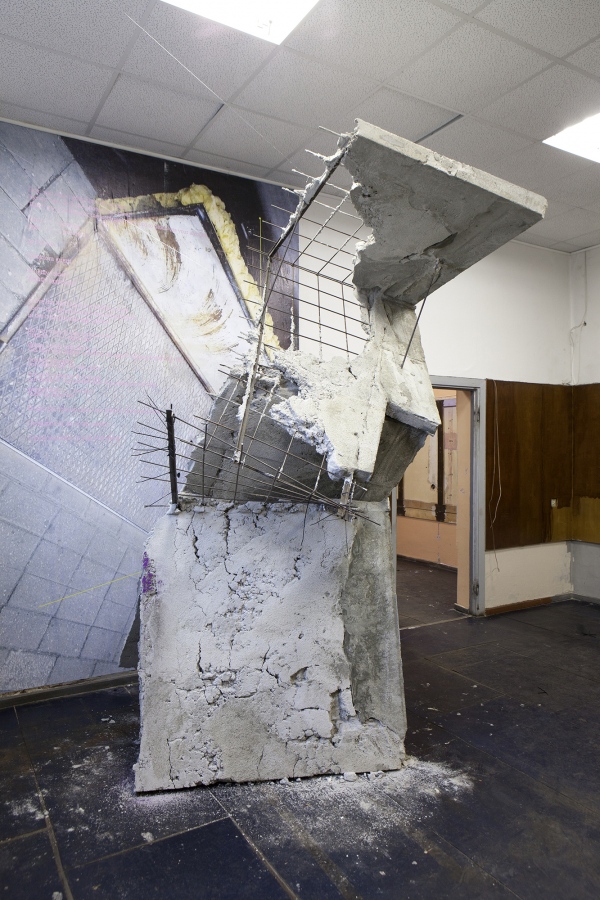
AA: At what point do you start envisioning all the various parts of your sculptures together, and in relation to the exhibition space?
EV: First, I make separate sculptures that seem urgent at the time. There are boiling ideas that seek for some daily light. I work on those parts first. After, I ask myself, okay, how does it relate to a bigger picture? How can I make this work welcome and comfortable? Normally, if I know ahead where I will be exhibiting, unconsciously “parts” take something from the future presentation space, weather it is a color, surface, curves or ceiling height. Sometimes even I am surprised at how something ends up fitting in the space without directly pushing it that way. I believe our body is super smart and collects information around us that we are not aware of.
AA: What challenges do you sometimes face when presenting your works?
EV: Challenges can be practical ones, how to materialise the desired volume, weight and concentration. I want too many contradictions, which often is impossible to reach. I want things big, but light, I want them to look heavy, but not to face the challenge of lifting them. These practicalities quite often shape my work, for example, how big is the door, is there water, can I drill into the wall?
Then there are contextual challenges. I used to be very upset and scared when people didn’t get it. It took me a while to realise that contemporary art can divide people into those who are comfortable with the unknown and those who shut down if there are no answers presented to them, or that art is not dealing with aesthetics as they know it. I am very happy that there are artists who are not afraid to be misunderstood, look for their ways of expression, something new, something risky, something we can’t label yet. So yes, there’s a challenge to stay calm and focused. I have learned that despite my mum not liking what I do, there are people who love it. The challenge is to keep the trust and motivation and to move in a direction that is not fixed, hard to name and not so profitable.
AA: Some of your sculptures resemble ruined cities. Is this an actual reference, or am I imagining things?
EV: Yes, please do imagine things. I like that. The work is open for interpretations and can be read from different perspectives. The viewer adds their perspectives to it. For me it is not about ruined cities, but rather the state of construction and deconstruction, not a fixed state. It could be a left over from the future or a foundation from the past, where the rest will be constructed later. Not touching something is as much as touching it. I like it when works are not connected to the past or the future, they are not finished dressing or just got undressed.
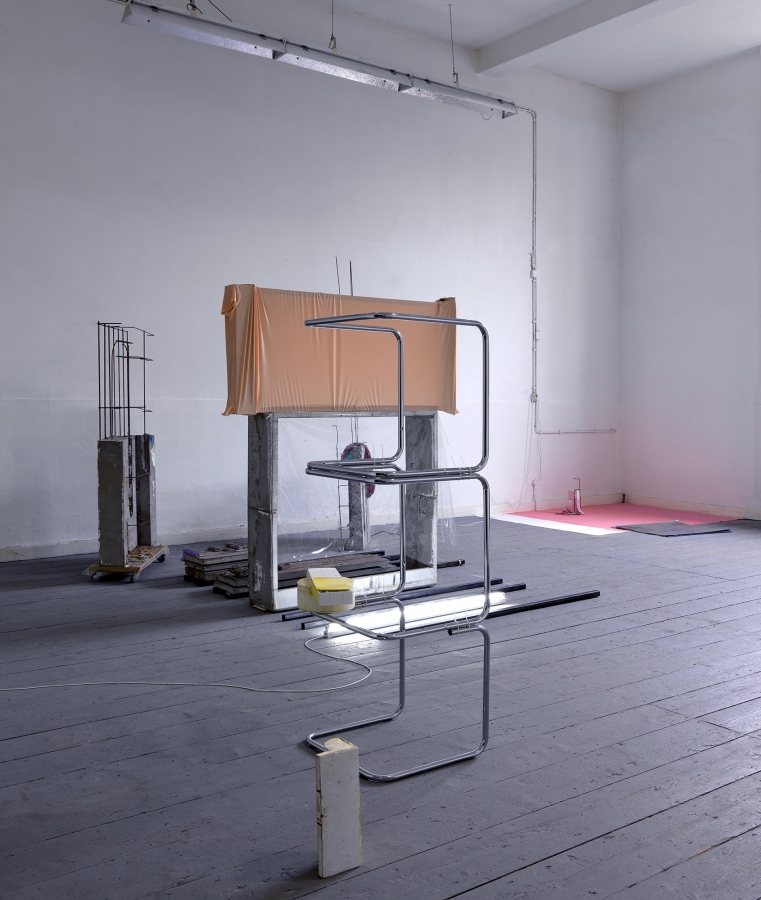
AA: Is there a relationship between nature and your work?
EV: I rather see it as a nature of things. I have lived most of my life in cities and see my surroundings as a manmade nature. We make walls, we make chairs to sit near the walls. What nature are we talking about? If we talk about nature that is outside my studio door at Suomenlinna, there is some relationship, but not the tree and rocks as we see them. Plants and trees are so beautiful, they are perfect, so I don’t touch them. There is nothing I can add to them. I use processed, human made materials that come from nature, like paper, wood, screws, glue, metal, clay, rubber. I try to avoid plastic, for example, but I do use it sometimes. I don’t like to be very strict about art and put any strict rules on it. Sometimes a plastic bag can be better than a cotton bag, depends on its use.
But yes, I do think about “basic” materials, such as wood, metal, concrete, rubber, paper, cardboard. I try not to hide their qualities or change their nature. If plaster breaks, so be it.
I do respect light, how it reveals colours and forms, and weathering of things, rust, decay, break, wear down, where the colour pigments are coming from, a green tone of bacteria growing on concrete. Nature creates beautiful combinations of colours and forms, which inspires me a lot.
AA: You said that people are sometimes surprised to find out that your works were made by a woman. Why do you think that is?
EV: I really don’t know. Maybe because some of my sculptures are heavy and big. Men like to build big bridges and skyscrapers.
AA: What are you currently working on?
EV: A text called Terms and Conditions. It might be a title of a sculpture or installation maybe. At this moment I am gathering fragments, make notes, write, sketch, layout ideas for new works. I made a ceramic collage experiment with transfer prints. I want to experiment more with ceramics (clay, colour, image). I’m fascinated by the stress ceramics undergo, while drying and firing. At the moment I want to open several doors, see where they might lead me. I’m still deciding if in May I will present my studio as a laboratory of thoughts and processes or crystalise it to a set of works suited the location.
